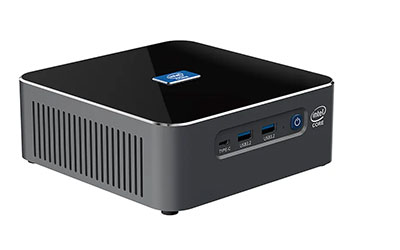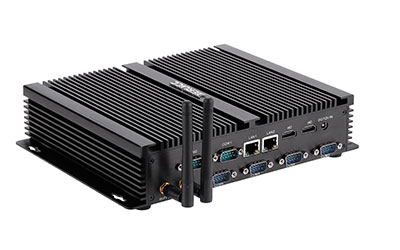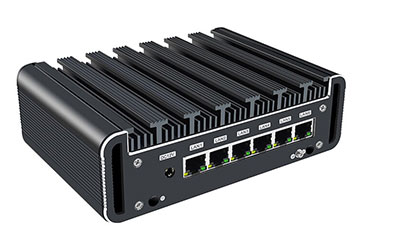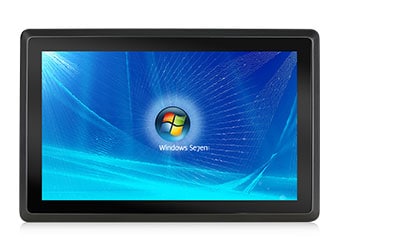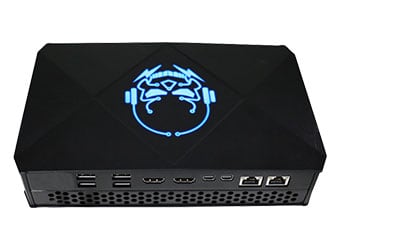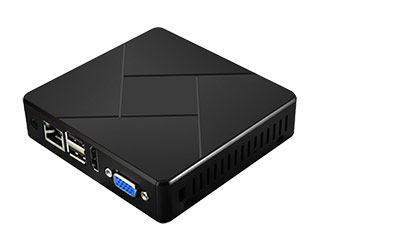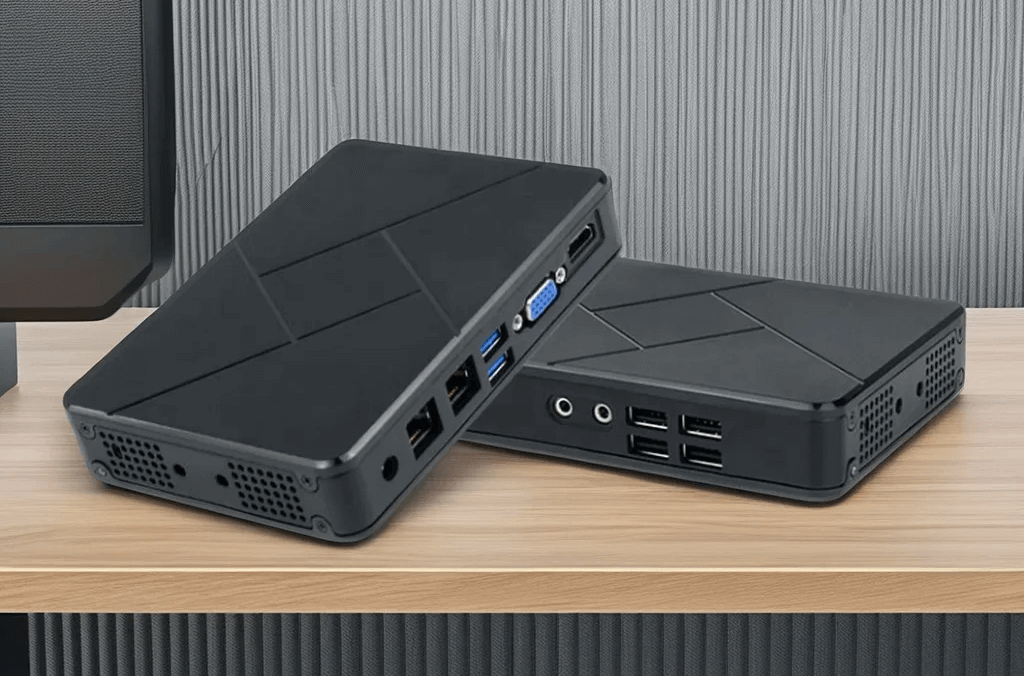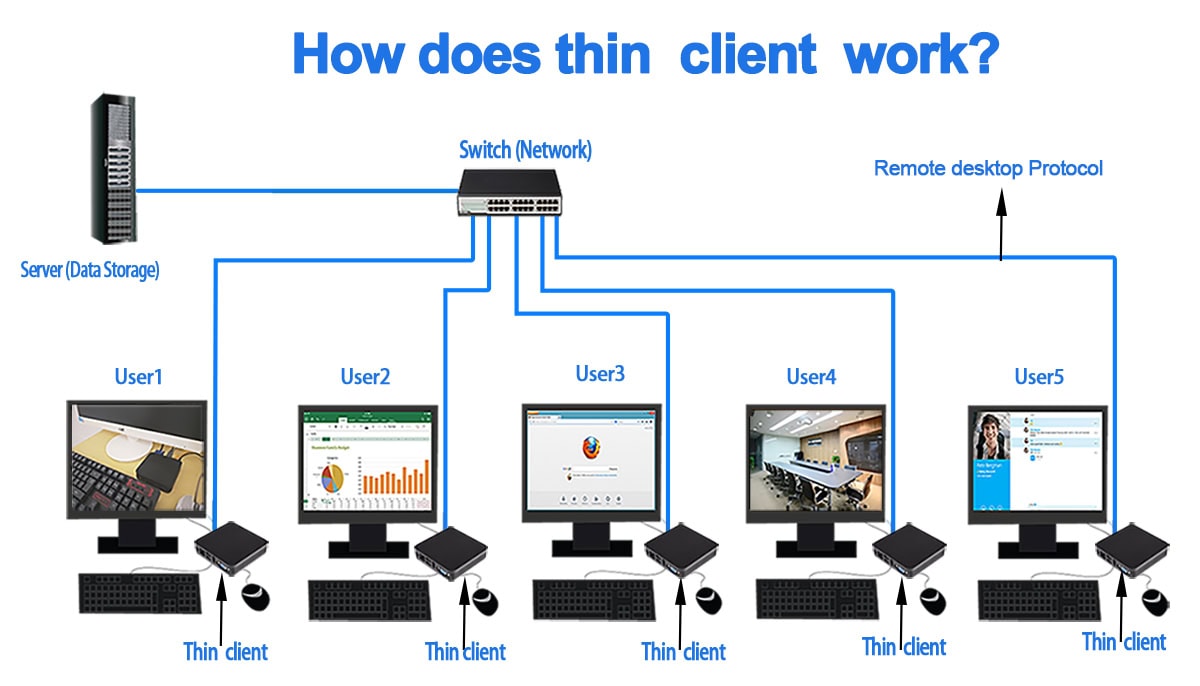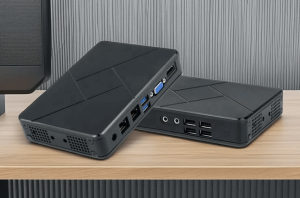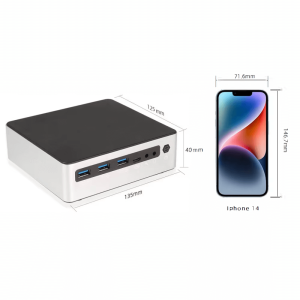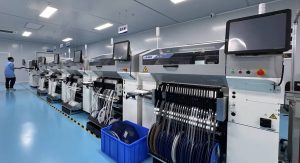Table of Contents
ToggleDo you know the purpose of using Thin client in offices and organizations? Do you know what the advantages of using Thin client over desktop computers? A Thin client is a small, simple, low-power device designed specifically to connect to a central server. Unlike traditional computers, a Thin client lacks an operating system, internal storage, or advanced processors. In fact, this device is completely dependent on a central server, where all software processing, data storage, and program execution take place. As a simple interface, the main task of a thin client is to display output information from the server and receive user input (such as clicks, typing, and other commands). The device connects to the server over the network and uses communication protocols such as RDP or PCOIP to transfer data between the user and the server. These protocols ensure that a stable, secure, and low-latency connection is established.
Thin client are widely used in centralized, cloud-based work environments such as virtual desktops (VDI). Due to their simplicity, high security, and low operating costs, these devices are ideal for organizations that want to reduce management complexity, improve data security, and optimize energy consumption
How does Thin client Work?
Thin client are devices that rely on a central server and perform processing and operations in a centralized manner using cloud computing or virtual desktop infrastructure (VDI). They work as follows;
Connecting to a central server
Thin client connect to a central server or desktop virtualization environment (VDI) through a network. The server, as the core of the system, performs all processing and calculations, and the Thin client only acts as an access point and is responsible for transferring data between the user and the server. This centralized architecture simplifies system management and control.
Data processing
All software and data are run and processed on the central server. The client does not perform any local processing and only acts as an intermediary. They display the results of server processing to the user and send user input (such as clicks and entered data) to the server. This approach reduces the complexity of local devices and improves system security.
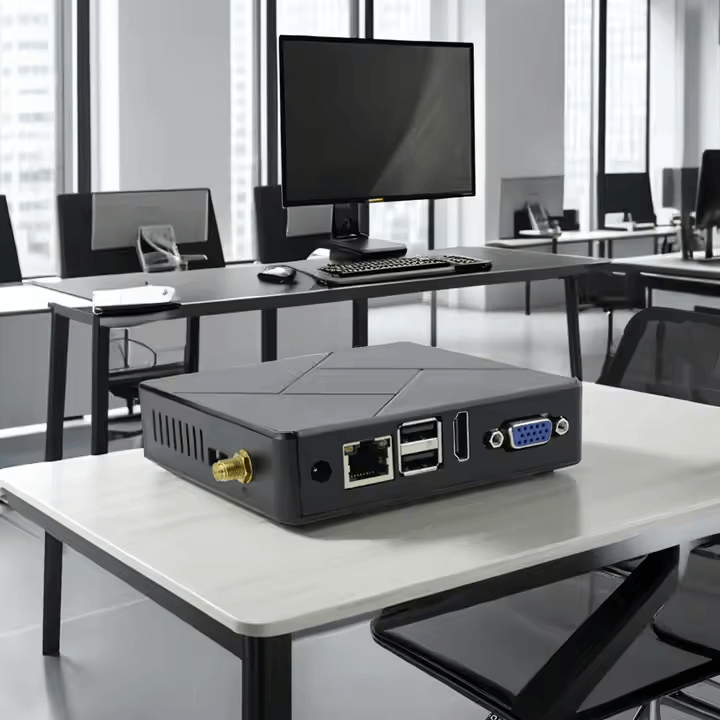
Information display
Thin client display information is processed by the server on their monitors. Users interact with the workspace through input devices (such as keyboards and mice) connected to the Thin client. This process gives users an experience similar to using a traditional computer, while all processing is done centrally on the server.
Communication protocol
RDP or PCoIP are used to transfer information between Thin clients and servers. These advanced communication protocols ensure stable, fast, and secure connections between users and servers. They also use data compression and bandwidth optimization to provide smooth performance even on slower networks.
Familiar with the use of Thin clients in offices and organizations
Thin client are widely used in enterprise environments due to their unique features. Focusing on reducing costs, improving security, and centralized management, these devices are ideal for many industries
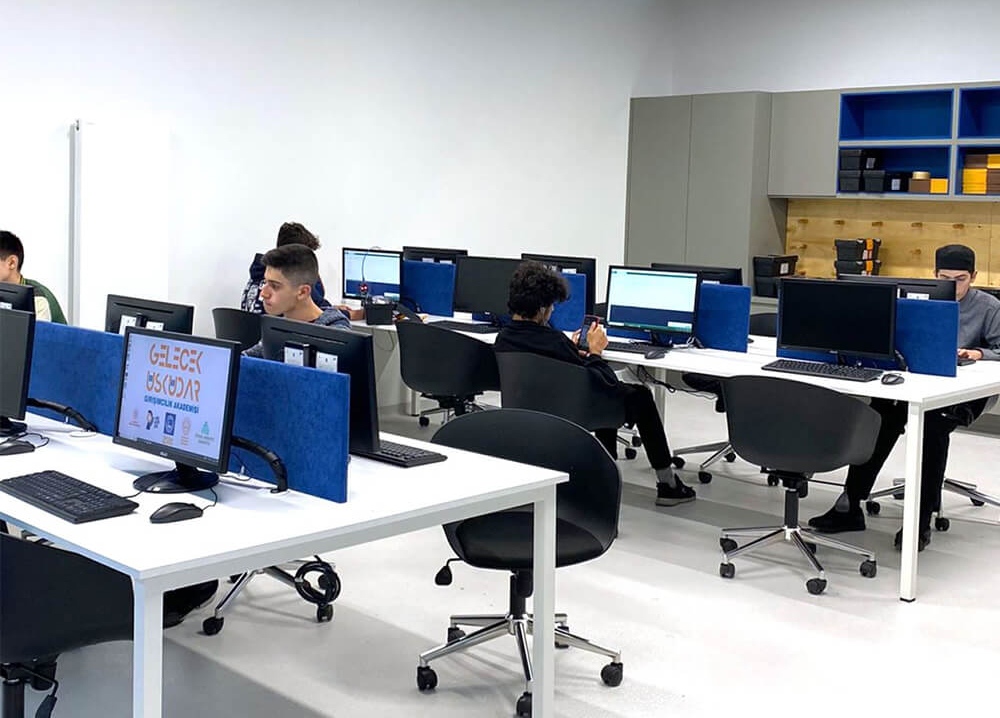
Thin client Who it’s for
Call Centers
Thin client are ideal for environments that need to run specific and limited software, such as call centers. These devices offer stable performance, easy management, and low costs. By using Thin clients, contact centers can benefit from a centralized, reliable system that reduces the need for frequent maintenance and improves productivity
Banks
In sensitive environments such as banks, data security is critical, and Thin client store data on a central server rather than on local devices, minimizing security risks such as data theft or unauthorized access. This feature allows banks to use a secure and stable system to manage their sensitive information
Education and Schools
Thin client provide a centralized and simple environment for schools and universities to run educational programs. These devices not only reduce equipment and maintenance costs but are also ideal for educational environments due to their low energy consumption and ease of management. In addition, Thin client allow for centralized software updates, facilitating the management of educational systems
Companies and Organizations
In large companies and organizations, Thin client help reduce hardware and energy costs. These devices effectively protect organizational data by providing high security and centralized management. Furthermore, due to their longer lifespan and lower maintenance requirements, Thin client can reduce operational costs and allow organizations to manage their resources more efficiently
Benefits of Thin Clients for Organizations
Thin clients significantly benefit organizations due to their simple design and lack of reliance on a central server. These benefits include
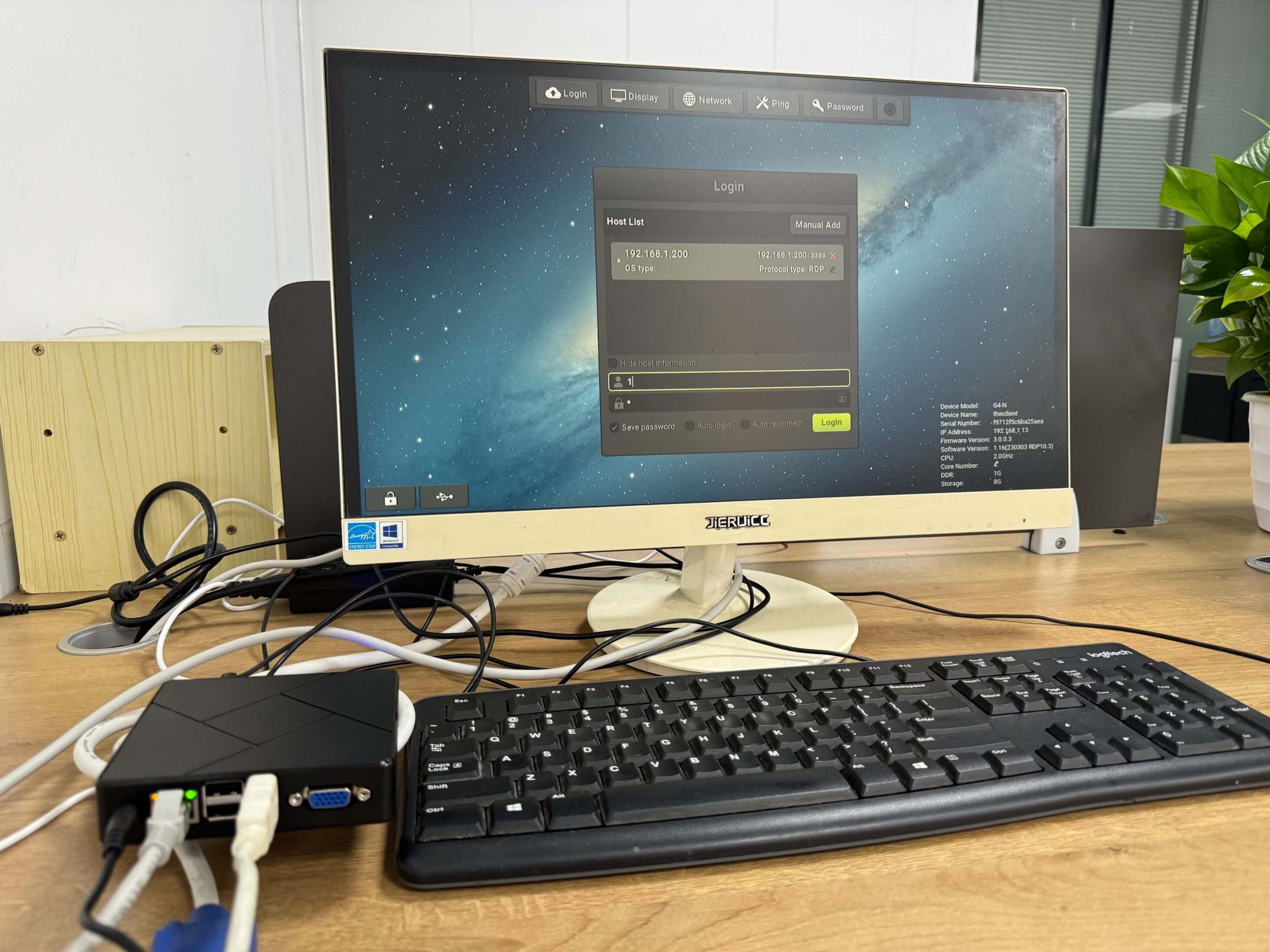
Analyzing the Advantages and Disadvantages of Thin Clients
High Security
Thin clients offer unparalleled security by storing all data and software on a central server. This structure ensures that no sensitive information is stored on the local device, minimizing the risk of data theft or unauthorized access.
This feature is especially important for organizations and groups that handle confidential and sensitive information. For example, banks, financial institutions, insurance companies, hospitals, and even businesses that emphasize maintaining the confidentiality of customer information can benefit from the security advantages of Thin clients
In addition, if the device is lost or falls into the hands of unauthorized persons for any reason, your information will not be at risk because all data is centrally and securely stored on the server. This smart structure takes security to a new level and enhances your trust in modern technology.
Reduced costs
The initial cost of a Thin client is much lower than that of a traditional computer, and that’s just the beginning. The simple structure of these devices not only eliminates the need for complex and expensive maintenance but also significantly reduces maintenance costs.
On the other hand, the energy consumption of Thin client is much lower, which has a direct impact on reducing the running costs of an organization. This feature is especially important for companies with larger operations or a working environment with a large number of devices.
In today’s world, reducing costs and optimizing resources are the top priorities for every organization, and Thin client are seen as an economical and smart solution, ideal for such companies.
Centralized management
By using Thin clients, all management operations are performed in the simplest and most efficient way. Software updates, installation of new programs, and even technical support are managed through a central server. This centralized structure not only eliminates the need to manage each device individually but also significantly saves the organization’s time and resources.
Centralized management has another key advantage: ensuring complete security and coordination. With this system, you can ensure that all devices are always up to date and apply the latest security standards. This feature is especially important for organizations with a large number of users or high-security needs, such as banks, educational centers, and technology companies.
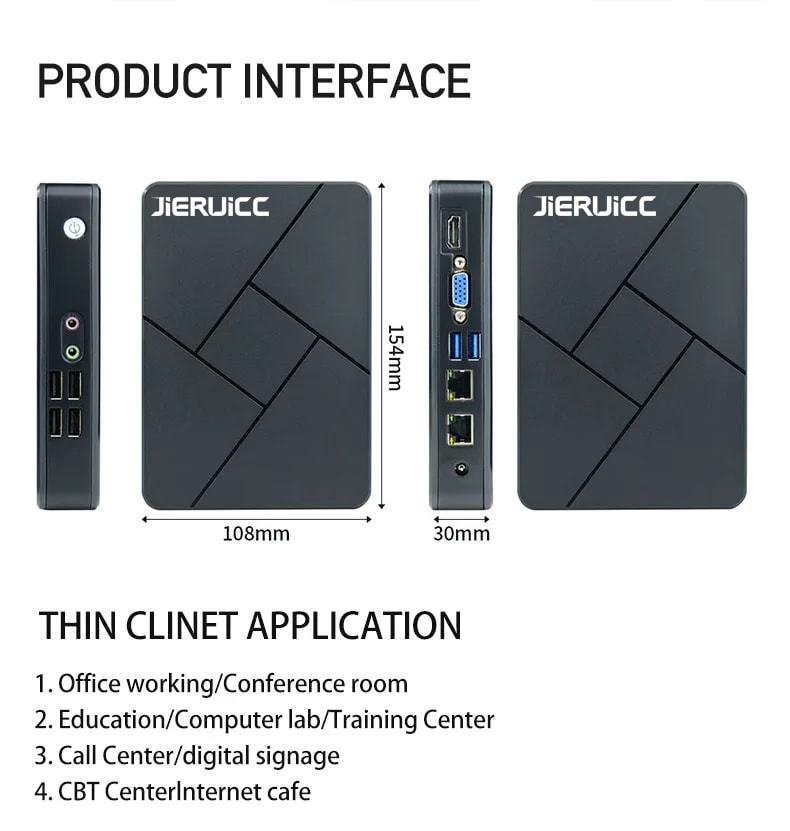
Low Energy Consumption
Thin client play a huge role in reducing power consumption by simplifying the design and eliminating energy-consuming components. These devices consume much less energy than desktop computers, making them ideal for organizations with a large number of devices.
In addition to reducing running costs, reducing energy consumption also has a positive impact on the environment. Companies and organizations looking for sustainable and responsible solutions can effectively reduce their carbon footprint by using Thin clients.
Longer Lifespan
With a simple design and no moving parts such as hard drives, Thin client offer an innovative solution to reduce downtime and extend the life of the device. The lack of moving parts means that the likelihood of hardware failures, which are common in traditional computers, is significantly reduced.
In addition to improving the durability and long-term performance of Thin clients, this feature can also help organizations significantly reduce the cost of repairing, maintaining, and even replacing devices. Thin client are an economically sustainable choice that can save organizations a lot of money in the long run.
Conclusion
Thin client are an ideal solution for organizations with high security, low-cost, and centralized management requirements. These devices have low power consumption, are easy to maintain, and are compatible with virtual desktops. Through Thin clients, operating costs can be reduced, and data security can be ensured. To purchase a capacity client, you can consult JIERUICC sales specialists. All products have a 36-month warranty, so you can buy with confidence. JIERUICC looks forward to your consultation.

